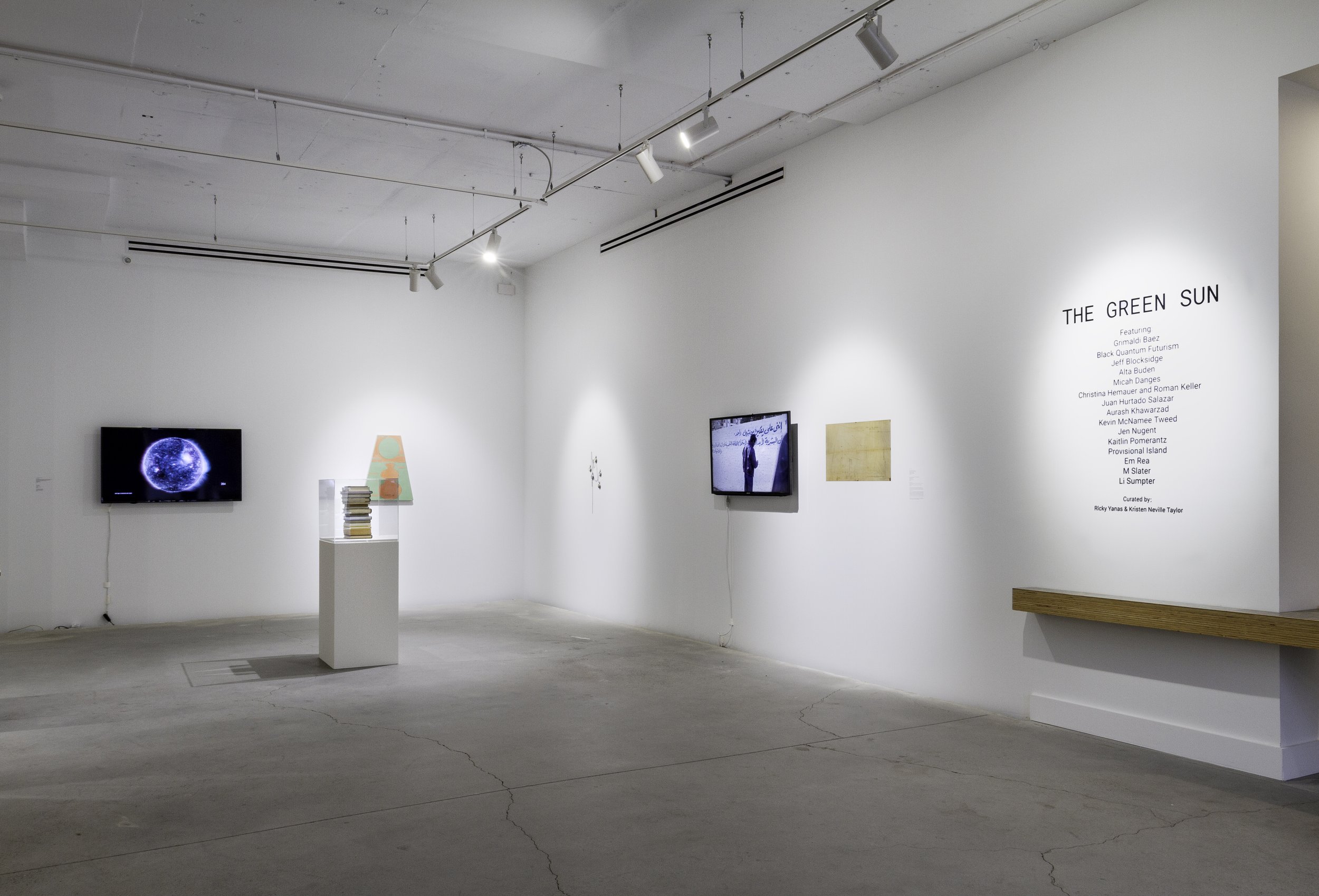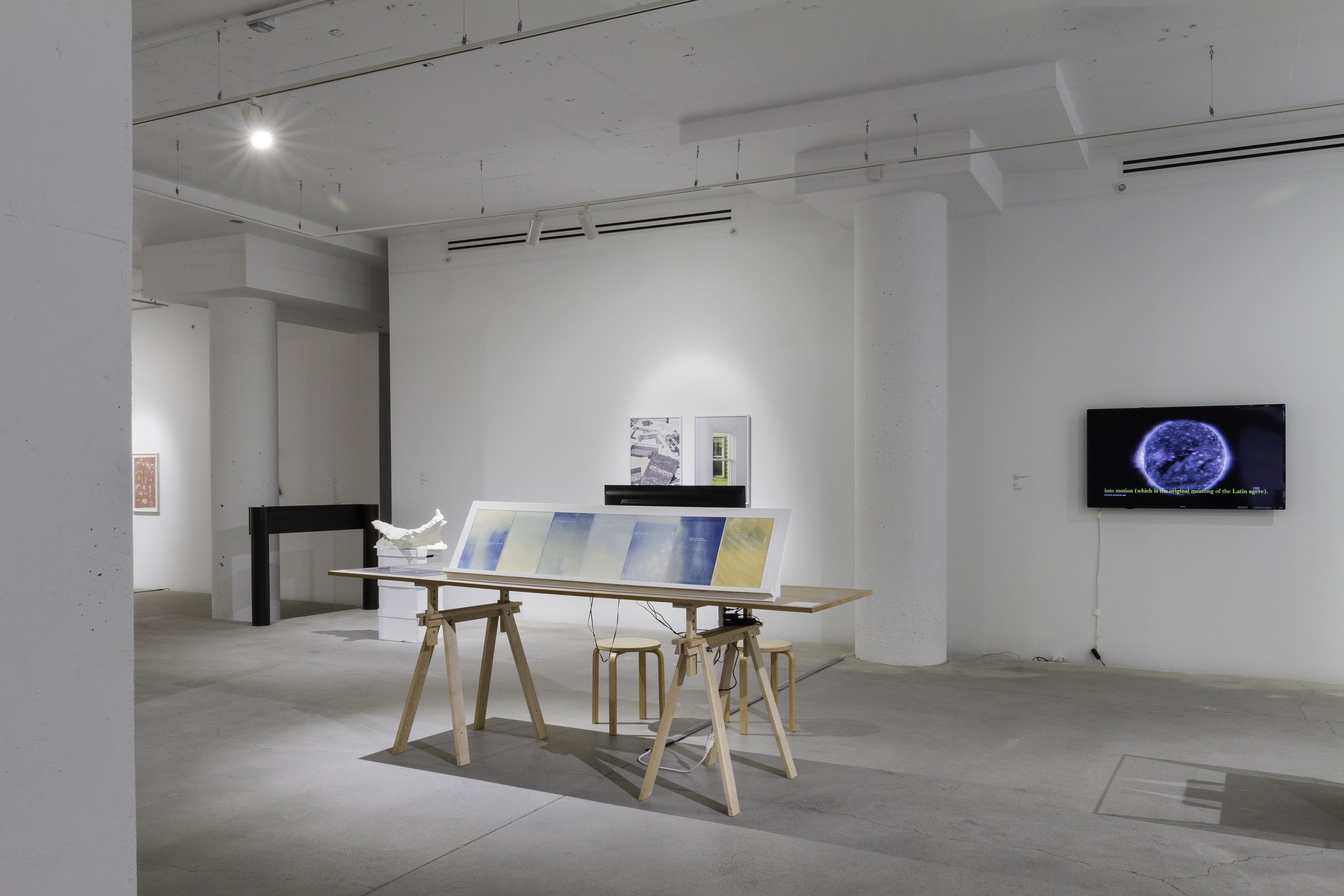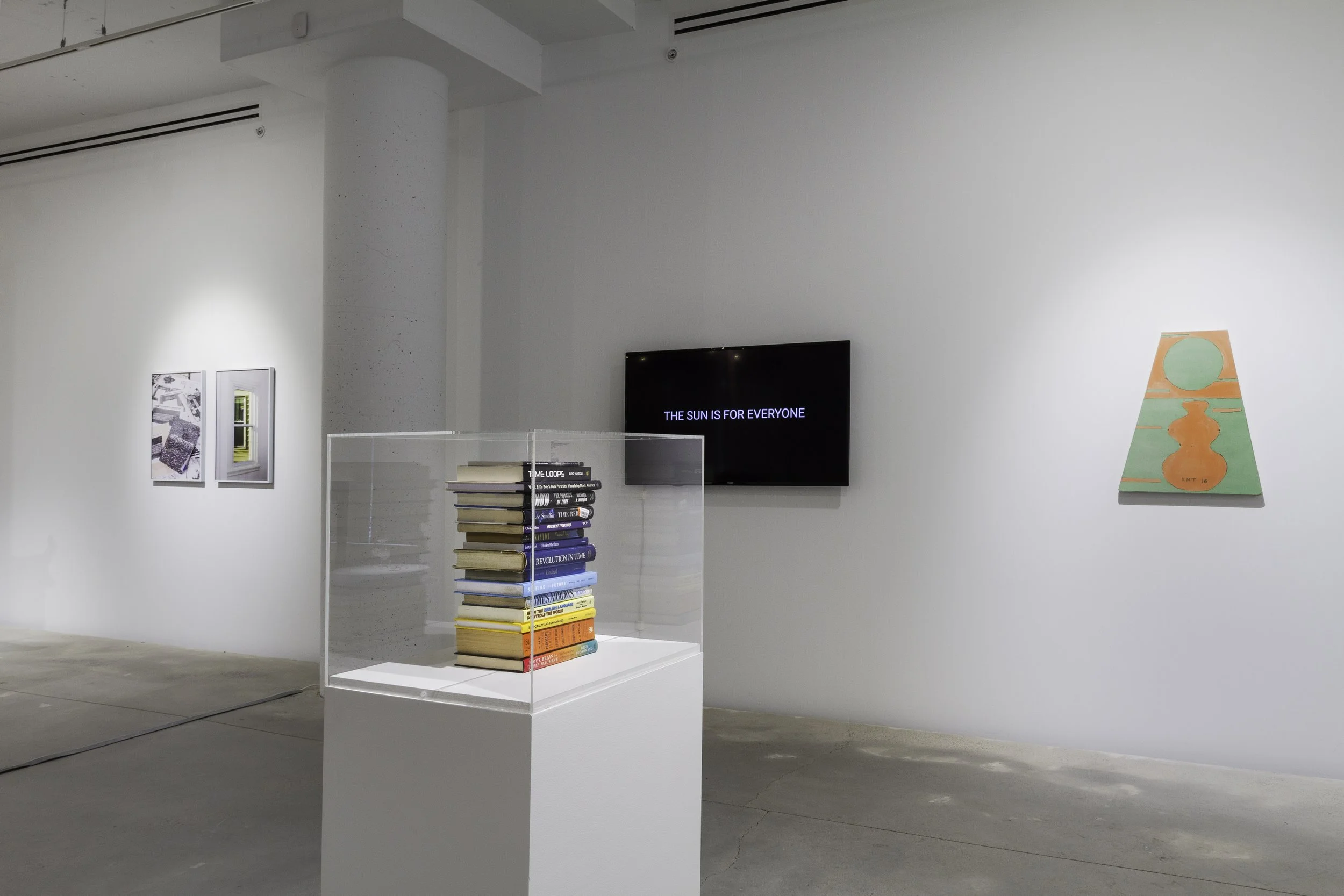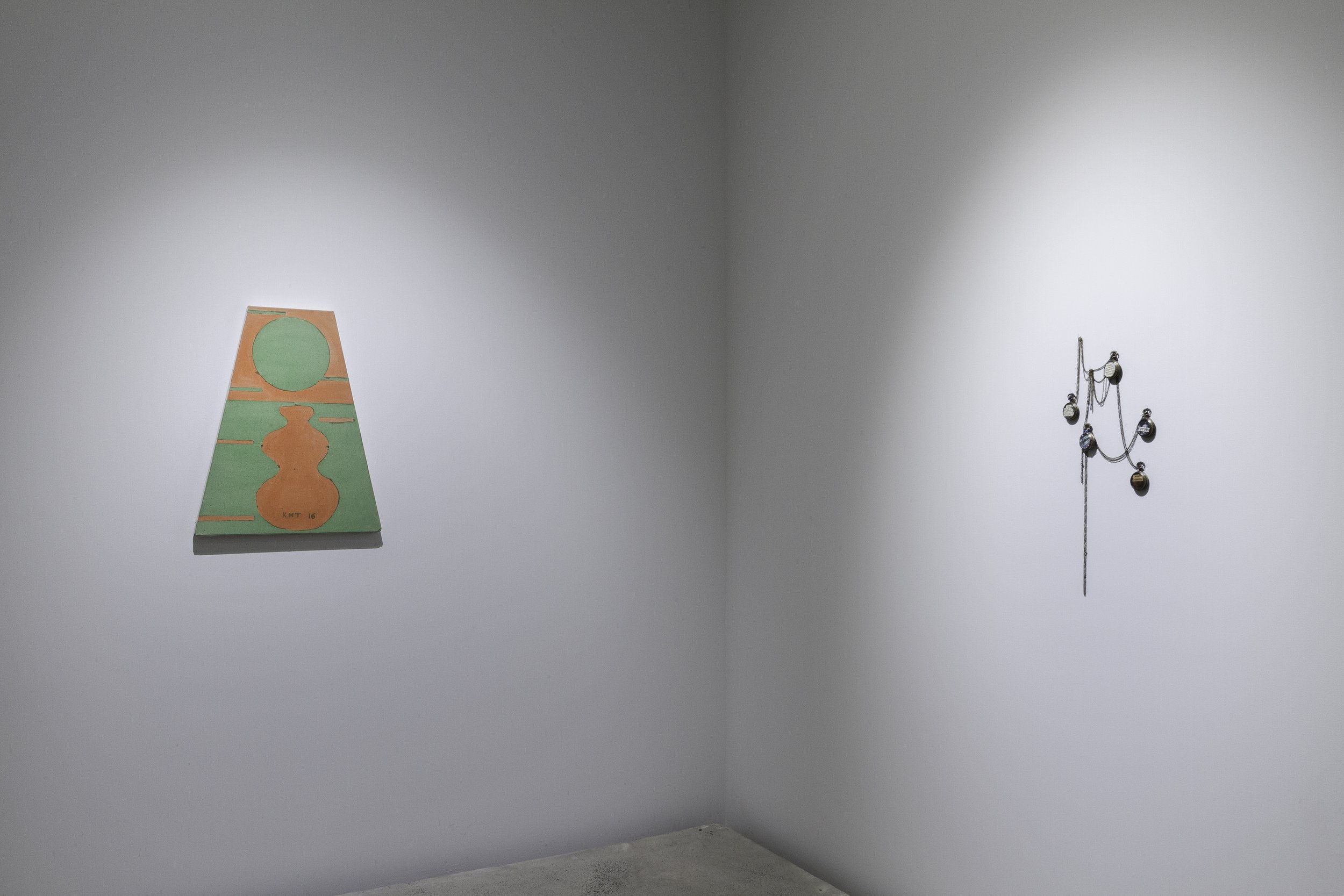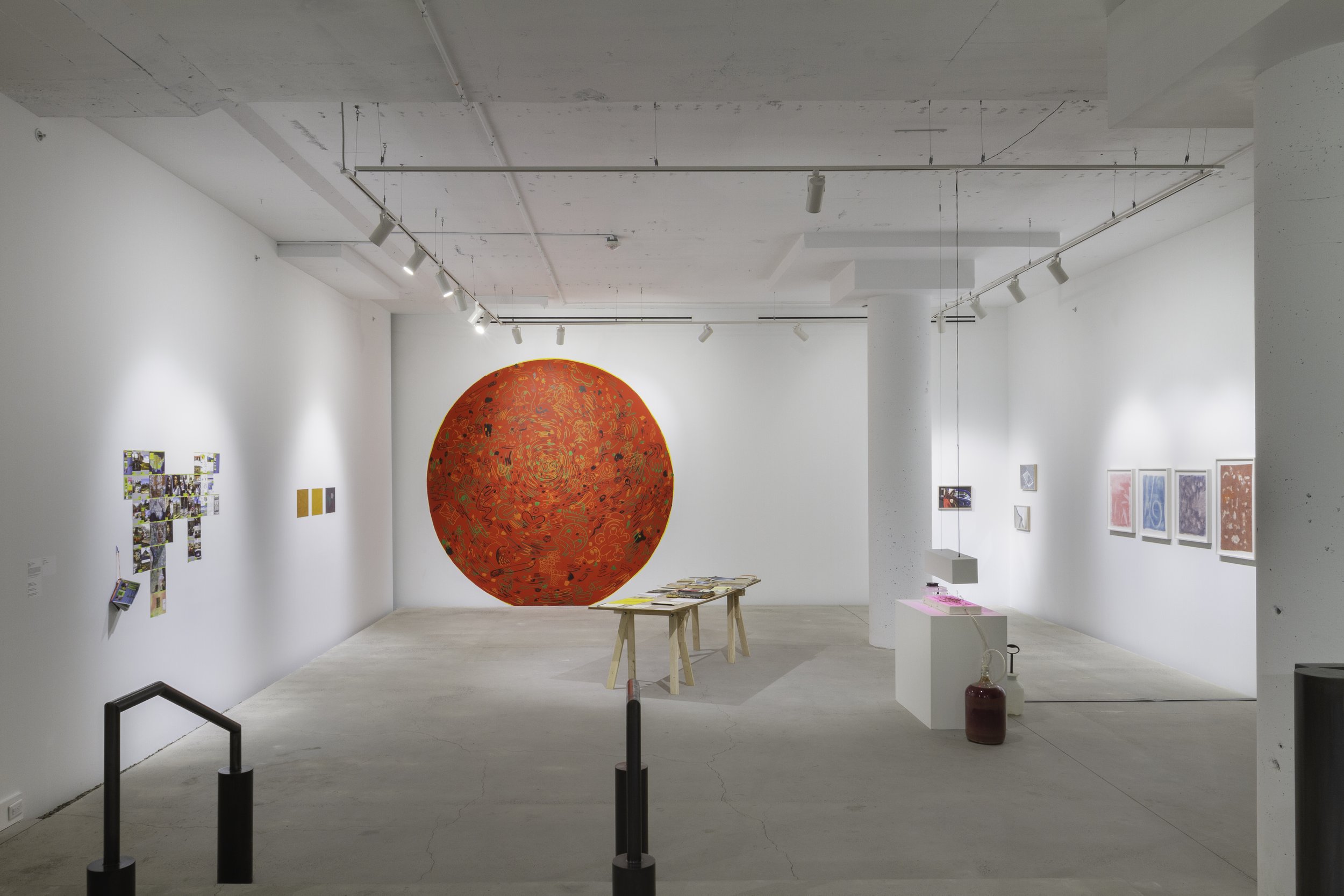
“To make a Secondary World inside which the green sun will be credible, commanding Secondary Belief, will probably require labour and thought, and will certainly demand a special skill, a kind of elvish craft. Few attempt such difficult tasks. But when they are attempted and in any degree accomplished then we have a rare achievement of Art: indeed narrative art, story-making in its primary and most potent mode.” -J.R.R. Tolkien
The Green Sun inaugural program acted as both exhibition and lab offering participating artists and local environmental organizers the space and time to closely consider the origins of solar technology, its technical & economic limits, its viability within local communities, and its narrative potential towards building a healthier, more equitable world. Throughout the course of the exhibition, physical and intellectual accumulation of these engagements was collected and added to the larger selection of works. Contributing artists and designers included Grimaldi Baez, Black Quantum Futurism, Jeff Blocksidge, Alta Buden, Micah Danges, Christina Hemauer and Roman Keller, Juan Hurtado Salazar, Aurash Khawarzad, Kevin McNamee-Tweed, Jen Nugent, Kaitlin Pomerantz, Provisional Island, Em Rea, M Slater, and Li Sumpter.
The opening of the exhibition directly coincided with the youth-organized Global Climate Strike that occurred on September 20th. On this date, three days before a UN emergency climate summit being held in New York, a coalition of millions walked out of their workplaces and homes to join young climate strikers on the streets and demanded an end to the age of fossil fuels. It was the beginning of a sustained mass mobilization necessary to pressure world governments to take action in line with climate science and justice. It is with programs like this and other intersecting movements that The Green Sun exhibition took its inspiration: the urgent work happening then, drawing on the influences of the past, that will make a better world possible.
“Why...” as philosopher Fredric Jameson asks, “is it easier to imagine the end of the world, than the end of capitalism?” The answer is elusive, weaved into the fabric of western civilization. However, the more important question is: How do we set a point on the horizon and begin to find our way out of this morbid scenario and towards a more accountable outcome?
It is our belief that artists play an important role in driving culture. It is our responsibility as much as any politician, industry leader, or spokesperson to create images, stories, and spaces that may offer platforms to launch us into the future. One free of the oppressive stranglehold over resources and more tragically, our collective imaginations.
Considering past inventions, alternative economies, different scales of time, alternative power systems, experimental policy proposals, and so on, from the sky to the ground, through the body, each work in the exhibition represents a gesture onward. Like Tolkein’s “green sun”, each work is imbued with the kind of “elvish craft”, the kind of “labour and thought” that makes the most outlandish of worlds feel concrete, real, and possible.

